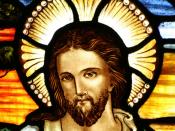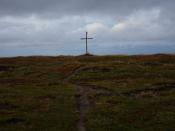A Forceful Presence of Christianity in Medieval World After the collapse of the Roman Empire and the establishment of the Germanic states, a new European civilization slowly emerged in the ninth and tenth centuries of the Early Middle Ages. Charlemagne, a descendant of a Germanic tribe converted to Christianity, had symbolized three chief factors of the new European civilization. They included the German tribes, the classical tradition, and Christianity (Spielvogel, 235). Christianity thrived in the medieval western world throughout the eleventh, twelfth, and thirteenth centuries. This new society, called Christendom, contributed to ?a period of recovery and growth for Western civilization, characterized by a greater sense of security and a burst of energy and enthusiasm? (Spielvogel, 237). In fact, during that period, the influence of Christianity was a primary determinant in three areas of medieval society. Christianity dominated the rise of universities, which resulted not only in developing well-educated clergy but also in teaching all students the essence of Christian principles.
The dominant form of art, created in gothic cathedrals, symbolized the preoccupation of a medieval Christian community. In Manorialism, even the lord and vassal structure was greatly influenced, as peasants were relieved from labor specifically to celebrate holy days and other religious feasts.
?The desire to introduce a systematic approach to knowledge greatly affected the formal study of religion that we call theology? (Spielvogel, 277). Christianity?s importance in medieval society was exhibited through theology?s central role in the European intellectual world. Theology was referred to as ?queen of the sciences?, reigning in monastic, cathedral and new universities (Spielvogel, 277). Medieval universities were educational guilds, or corporations that produced educated and trained individuals. Although monastic schools were most prevalent in the ninth through the eleventh century, cathedral schools extended into the eleventh century. The primary purpose of these schools...


